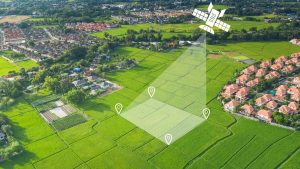As CodeHarper readers, you’re about to travel from dusty DARPA deserts to AI-powered driverless vehicles. Buckle up—we’re diving into a thrilling journey through the origins, breakthroughs, and future of autonomous cars.
Table of Contents
Toggle🚀 From Military Ambition to Open Innovation
In the early 2000s, DARPA—the Defense Advanced Research Projects Agency—launched the Grand Challenge to push autonomous vehicles from labs to real-world terrain. The 2004 event in the Mojave Desert offered a $1 million prize to the first autonomous vehicle to traverse 142 miles solo. It started rough: none finished, most barely managed a few miles before flipping or stalling.
Despite the failure, the Grand Challenge sparked a worldwide passion—teams of students, startups, and DIY engineers realized robotic driving was possible.
🌟 Grand Challenge Triumphs: 2005 & 2007
Flash forward to 2005: DARPA tried again—this time, five vehicles completed the course, with Stanford’s Stanley (a VW Touareg) winning in under 7 hours to claim $2 million icles were now navigating traffic, merging, obeying stop signs, and executing U-turns. DARPA ignited a movement that forever changed mobility.
🤖 Why It Matters: From Desert Sands to Silicon Valley
-
Talent incubators: Many Grand Challenge veterans joined Google’s self-driving project—within 18 months, they had test cars navigating San Francisco’s Lombard Street
-
Startup boom: Major automakers and startups responded. Ford, VW, GM, Mercedes poured billions into R&D. Over 100 small firms now supply lidar, radar, and data platforms .
-
Ride-hailing synergy: Companies like Uber and Tesla seized the opportunity, accelerating integration between autonomy and services like ride-sharing
🔧 Tech Foundations: Sensors, AI, & Data
The hardware is increasingly affordable:
-
Radar and cameras: Mass-produced for driver assistance.
-
Lidar: Prices dropping fast; advanced models even measure object velocity.
-
Edge compute: Nvidia, Intel, Qualcomm—and now Tesla’s bespoke chips—power powerful onboard AI processing
Yet true autonomy depends on machine learning and massive datasets. Distinguishing a bicyclist from a stray cart isn’t simple—it’s why firms like Argo AI, Cruise, and Waymo have accumulated billions of simulated and real miles .
🧠 The Vision: Autonomous Everywhere… Eventually
But driverless cars won’t debut in every driveway overnight. The transformation depends on:
-
Regulation and infrastructure: Smart roads, legal frameworks, safety standards.
-
Business models: Will robotaxis, fleet autonomy, or personal ownership dominate?
-
Public trust: User acceptance depends on consistent safety and transparency.
Connectivity and ethics will shape the journey—smart infrastructure and policy need to evolve fast.
⚡ Quick Comparison: Key Milestones & Vehicles
| Year | Event/Vehicle | Significance |
|---|---|---|
| 1961 | Stanford Cart | First autonomous vehicle; early AI & camera system |
| 2004 | DARPA Grand Challenge | First practical test; 0/15 vehicles finished |
| 2005 | DARPA Grand Challenge (Stanley) | Stanley completes course in 6h54m; $2M reward |
| 2007 | Urban Challenge | Vehicles adhere to traffic laws; autonomous urban driving |
| 2009 | Google Self‑Driving Project | Old DARPA talent builds SF-capable autonomous cars |
| 2015 | Showdown phase | Waymo, Tesla, Uber amplify autonomy investments |
🎥 Must-Watch Video: DARPA Grand Challenge Highlights
🔗More to read on this topic –
-
Smithsonian on Stanley’s Grand Challenge win mobileye.com+11spectrum.ieee.org+11youtube.com+11en.wikipedia.org+12smithsonianmag.com+12en.wikipedia.org+12
-
IEEE Spectrum’s “Starting Line” retrospective darpa.mil+13spectrum.ieee.org+13spectrum.ieee.org+13
-
Wired on how races launched self-driving tech wired.com+3wired.com+3wired.com+3
-
Mobileye’s timeline of AV breakthroughs wired.com+15mobileye.com+15computerhistory.org+15
🔊 What people are saying about this on Social Media
Twitter/X:
From DARPA’s dusty deserts to Google’s robotaxi revolution—here’s how self-driving cars became a reality. A must-read journey from CodeHarper 🤖 #AutonomousVehicles
Facebook:
Did you know no car finished the first DARPA Grand Challenge in 2004? Just a year later, five did—and cars began driving themselves. Explore the epic origin story of self-driving vehicles at CodeHarper!
LinkedIn:
DARPA’s Grand Challenge wasn’t just a race—it launched the multi-billion-dollar autonomous vehicle industry. Discover the milestones, tech breakthroughs, and future outlook in our in-depth guide from CodeHarper.
✅ CodeHarper’s Insight

Self-driving cars didn’t spring up overnight—they evolved through vision, competition, and massive technology investments. From the experimental Stanford Cart to commercial robotaxis, the journey illustrates how practical AI and real-world testing come together. The road ahead? Safer streets, smarter infrastructure, and policy that supports—not hinders—innovation.
🛑 The Challenges Ahead for Self-Driving Cars
Even with massive investments and technological breakthroughs, fully autonomous cars still face several challenges:
1. Legal and Regulatory Barriers
Governments around the world are racing to draft laws that govern autonomous vehicles. Without clear national or global frameworks, deployment remains fragmented. Some U.S. states like California and Arizona have been early adopters, while others are more cautious.
👉 Read: California’s AV Deployment Guidelines – DMV.gov
2. Ethical Dilemmas
Self-driving systems must make decisions that involve human life. For example, in a split-second emergency, should the car prioritize the safety of its passenger or pedestrians? These ethical questions are extremely difficult to encode into machine logic.
👉 Explore: MIT’s Moral Machine Experiment
3. Weather and Environmental Limitations
While self-driving cars do well in sunny, dry environments, they still struggle in snow, heavy rain, and fog—where cameras and lidar often misread surfaces or fail entirely.
📈 Business Models Shaping the Autonomous Economy
🔄 Robotaxis
Companies like Waymo and Cruise are heavily investing in robotaxi fleets—fully driverless cars you summon via an app.
🚚 Autonomous Freight
Startups like TuSimple, Aurora, and Kodiak are building autonomous trucking systems to reshape logistics and reduce freight costs.
🛒 Consumer Vehicles
Tesla and Mercedes-Benz continue to add self-driving features to retail models, offering ADAS (Advanced Driver Assistance Systems) on premium cars.
🧠 Software as a Service (SaaS)
Many companies may not manufacture cars but instead license autonomous driving stacks, like Mobileye’s EyeQ platform, to other automakers.
📊 Infographic: Levels of Autonomy (Copy-Paste in WordPress)
<img src="https://upload.wikimedia.org/wikipedia/commons/thumb/b/bc/Levels_of_autonomy.svg/1920px-Levels_of_autonomy.svg.png" alt="Levels of Driving Automation" width="100%" />
| SAE Level | Description | Human Role |
|---|---|---|
| Level 0 | No automation | Full-time driver |
| Level 1 | Driver assistance (e.g., cruise control) | Partial control |
| Level 2 | Partial automation (e.g., Tesla Autopilot) | Must monitor |
| Level 3 | Conditional automation | Driver backup |
| Level 4 | High automation (e.g., Waymo) | No driver needed in geo-fenced areas |
| Level 5 | Full automation | No driver needed anywhere |
💬 What the Public Thinks: Trust Issues & Acceptance
According to a Pew Research Center survey, only 39% of Americans are comfortable with riding in a driverless vehicle. Incidents involving Tesla’s Autopilot or Uber’s fatal pedestrian crash in 2018 have damaged public confidence.
👉 Pew Study on Americans’ Views of Autonomous Vehicles
However, younger generations are more receptive. As these systems prove themselves safe over time, adoption rates are expected to climb.
🔮 What’s Next for Autonomous Vehicles?
🌐 Connected Infrastructure
Smart cities are emerging with 5G-connected intersections, cloud-integrated vehicles, and AI traffic control. Countries like Singapore and Sweden are already running pilot projects.
🧪 Simulation & Digital Twins
Companies use digital twins—virtual models of entire cities—to train AI systems in simulated environments. Waymo, for example, simulates over 20 million miles per day.
🪪 Vehicle Identity, Blockchain & Cybersecurity
To ensure safety, self-driving cars must be secure. Blockchain is being explored to authenticate updates, and AI systems are being hardened against hacking.
🧾 Final Thoughts from CodeHarper
The age of autonomous vehicles is no longer science fiction—it’s a global industrial transformation. While there are roadblocks ahead, the speed of innovation is unmatched. From DARPA’s dirt tracks to Waymo’s city loops, self-driving cars are becoming part of our everyday future.
CodeHarper will continue to bring you up-to-date insights on mobility tech, AI innovation, and smart city integration—subscribe and stay ahead of the curve.
📬 What you can do –
🚗 What’s your take on self-driving cars? Would you trust one with your morning commute?
Join the conversation below in the comments or tag us on social media with #CodeHarperAV.
📢 Subscribe to the CodeHarper newsletter for exclusive updates on tech breakthroughs, future mobility, and practical AI innovations delivered weekly!




